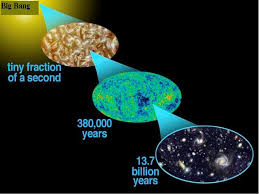Speaker
Описание
Quantum Chromodynamics (QCD) Matter Under Nambu-
Jona–Lasinio (NJL) Model and Phase Transition Temperature
Quantum Chromodynamics (QCD) is one of the fundamental and ultimate theory of strong
interactions. It describes the interaction of quarks through their colour quantum numbers
called colour charges. The mediating particles are gluons which are called gauge bosons with
spin-zero particles and are massless. QCD deals with two extreme forms of matter in two
phases. One heated to trillion degrees called QCD quenched and other maintained at zero
temperature labelled as QCD vacuum. Low energy QCD deals with systems of light quarks
where energy and momentum scales are smaller than 1 GeV mass energy gap observed in
hadron spectrum. Right after the Big Bang, quarks and leptons were mass-less. When the
temperature of the universe dropped below 100 GeV, the spontaneous breaking of the
electroweak symmetry resulted in Higgs particles condensing in the vacuum, this "Higgs
mechanism” gave mass to leptons and quarks. With further cooling, once the temperature
dropped below 100 MeV, the quarks and gluons became confined in protons and neutrons.
The QCD vacuum was modified by the spontaneous breaking of chiral symmetry giving the u
(up) and d (down) quarks in the nucleon an "effective" mass of some 300 MeV. This
constituent mass of the quarks is different from their current mass. The Higgs mechanism is
only responsible for ~2% of the mass of the nucleon, QCD dynamically generates the
remaining 98% of the mass of ordinary matter. At low energy scale which is also relevant for
conventional nuclear physics, QCD exhibits two important features. One is called the color
confinement and other is approximate chiral symmetry and its spontaneous breaking. In case
of physical quark masses neither chiral condensate vanishes nor chiral susceptibility diverges
at the pseudo-critical temperature. In spite of this these quantities retain a reminiscent
behaviour of them corresponding to one in the chiral limit. In particular the chiral
susceptibility has a peaked structure as a function of temperature and it is customary to define
critical temperature as the temperature for which susceptibility reaches its peak.
Hamid Nanda (Jamia Millia Islamia New Delhi)
PhD in Theoretical High Energy Nuclear Physics

